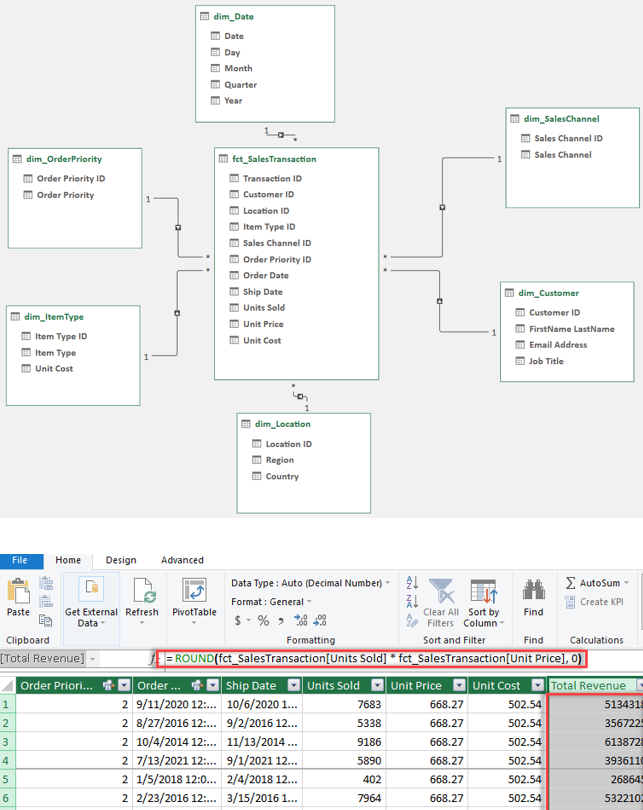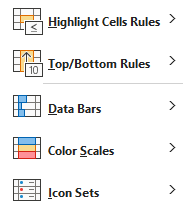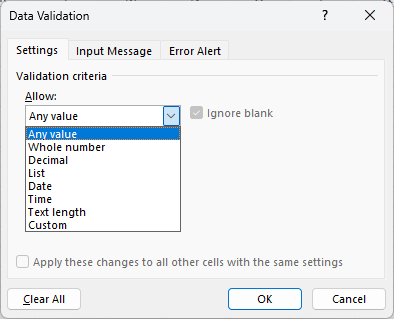Our step-by-step guide covers 8 excel advanced features for data analytics, customizable dashboards and data visualizations that drive data-driven decisions.
by Mihir Kamdar / Last Updated:

This comprehensive guide on tools for building an interactive Excel dashboard. By the end of this article, you’ll be able to:
In today’s data-driven world, Excel dashboards have become an essential tool for professionals looking to make informed decisions quickly. By mastering advanced Excel features, you can create dynamic and interactive dashboards that not only display data but also allow users to explore and gain deeper insights from it. In this comprehensive guide to creating interactive dashboards, we’ll walk you through 9 powerful Excel features that will elevate your dashboard skills to the next level.
We’ll be using a single Excel file throughout this tutorial to demonstrate each step, ensuring a cohesive learning experience. By the end of this article, you’ll have the knowledge and practical skills needed to take Excel skills and create a professional-grade dashboard that will impress your colleagues and drive data-driven decision-making in your organization.
Power Query is your gateway to efficient data management, enabling the seamless integration of data preparation and transformation. Power Query simplifies the data analysis and preparation process by effortlessly connecting to various data sources and cleaning large datasets.
Power Query is a game-changing tool that simplifies the process of data transformation and connectivity in Excel. With Power Query, you can easily connect to various data sources, clean and shape your data, and combine information from multiple sources into a single table. This feature is particularly useful when creating dashboards, as it allows you to automate data preparation and ensure consistency across your dataset.

1. Data connectivity: Power Query enables you to connect to a wide range of data sources, including Excel files, databases, web pages, and cloud services like Google Analytics and Salesforce.
2. Data transformation: With Power Query’s intuitive interface, you can easily clean, filter, and reshape your data. Common transformations include removing duplicates, splitting columns, and replacing values.
3. Data combination: Power Query makes it simple to merge and append data from multiple sources, allowing you to create a comprehensive dataset for your dashboard.

Unleash the potential of Power Pivot to revolutionize your data analysis. This powerful tool, integrated within Excel, enables advanced data modeling and analysis capabilities.
Power Pivot is an advanced data modeling tool that allows you to create sophisticated data models and calculations within Excel. By leveraging Power Pivot, you can handle larger datasets, establish relationships between tables, and perform complex calculations using measures and DAX (Data Analysis Expressions) functions.

1. Data Model: Power Pivot enables you to create a data model by establishing relationships between tables based on common columns. This allows for efficient data storage and faster calculations.
2. Calculated Columns and Measures: With Power Pivot, you can add custom calculations to your data model using calculated columns and measures. Calculated columns are used to create new columns based on existing data, while measures are dynamic calculations that aggregate data based on the user’s selection.
3. DAX Functions: Data Analysis Expressions (DAX) is a formula language used in Power Pivot to create powerful calculations and data manipulations. DAX functions allow you to perform complex operations like time intelligence, filtering, and conditional aggregations.

PivotTables and PivotCharts are powerful tools that allow users to dynamically explore and visualize data in Excel. PivotTables enable you to summarize and reorganize large datasets, while PivotCharts provide a visual representation of the data, making it easier to identify trends and patterns.
To create effective PivotTables for your dashboard, follow these best practices:
1. Structure your data: Ensure your data is organized in a tabular format with clear headers and no blank rows or columns.
2. Apply filters and slicers: Use filters and slicers to allow users to interact with the data and focus on specific subsets of information.
3. Utilize calculated fields and measures: Enhance your PivotTable by creating custom calculations using calculated fields and measures.

PivotCharts are an essential component of creating interactive dashboards, as they provide a visual representation of your PivotTable data. To create impactful PivotCharts:
1. Choose the right chart type: Select a chart type that best represents your data and the insights you want to convey, such as a column chart for comparisons or a line chart for trends over time.
2. Customize your charts: Enhance the clarity and visual appeal of your PivotCharts by customizing elements like titles, legends, and data labels.
3. Make your charts interactive: Enable users to interact with your PivotCharts by adding filters and slicers, allowing them to drill down into specific data points or segments.

Slicers and timelines are pivotal for elevating dashboard interactivity. By incorporating these tools, users can seamlessly filter data, enabling a dynamic viewing workflow management advanced analytics experience.
Slicers and timelines are interactive filtering tools that allow users to quickly and easily explore data in your dashboard. Slicers provide a visual way to filter data based on specific categories, while timelines enable users to filter data based on date ranges.

To add slicers to your dashboard:
1. Create a slicer: Select your PivotTable or PivotChart, go to the “PivotTable Analyze” tab, and click on “Insert Slicer.” Choose the field you want to filter by.
2. Customize your slicer: Format your slicer to match your dashboard’s design by adjusting the style, color, and layout options.
3. Connect your slicer to multiple PivotTables and charts: To create a cohesive and interactive dashboard, connect your slicer to all relevant PivotTables and charts by right-clicking on the slicer and selecting “Report Connections.”

Timelines are particularly useful for dashboards that analyze data over time. To add a timeline to your dashboard:
1. Create a timeline: Select your PivotTable or PivotChart, go to the “PivotTable Analyze” tab, and click on “Insert Timeline.” Choose the date field you want to filter by.
2. Customize your timeline: Adjust the appearance of your timeline by modifying the style, format, and displayed time periods.
3. Use the timeline to filter your data: Interact with the timeline by selecting specific date ranges or dragging the handles to adjust the displayed time period.

Get ready to elevate your Excel dashboards with the game-changing feature of conditional formatting. By leveraging this powerful tool, you can visually represent data in excel tools a whole new light, making key insights pop and data trends more apparent.
Conditional formatting is a powerful Excel feature that allows you to highlight cells or ranges based on specific conditions data patterns or criteria that explain data. In the context of dashboards, conditional formatting can be used to draw attention to key insights, trends, data patterns or anomalies in your data.

Excel offers several types of conditional formatting, including:
1. Data bars: Represent cell values as horizontal bars, making it easy to compare values across a range.
2. Color scales: Apply a color gradient to a range of cells based on their values, helping to visualize the distribution of data.
3. Icon sets: Assign icons to cells based on their values, providing a quick visual indicator of performance or status.

Data validation in Excel is crucial for maintaining data integrity. By setting rules and parameters, you can ensure that the data entered meets specific criteria, reducing errors and inconsistencies.
Data validation is an Excel feature that allows you to control the type of data entered into specific cells or ranges. By setting validation rules, you can ensure that the data in your dashboard is accurate, consistent, and within the expected parameters.
Excel offers several types of data validation, including:
1. List-based validation: Restrict cell entries to a predefined list of options, such as a dropdown menu.
2. Numeric and date-based validation: Set allowable ranges for numeric or date values, preventing entries outside the specified limits.
3. Custom formula-based validation: Create custom validation rules using formulas, allowing for more complex and specific criteria.

Forms in Excel provide a user-friendly interface for entering, editing, and viewing data in a structured manner. By incorporating combo box into your dashboards, you can simplify data input and make it easier for users to interact with the underlying data.

VBA (Visual Basic for Applications) is a programming language used to automate tasks and create custom functions in Excel. Macros are sets of instructions written in VBA that can be executed to perform repetitive tasks or complex operations.
Some common dashboard tasks that can be automated using VBA and macros include:
1. Refreshing data: Create a macro that automatically updates your dashboard’s data sources and refreshes PivotTables and charts.
2. Custom calculations: Write VBA functions to perform complex calculations or data manipulations not easily achieved with standard Excel formulas.
3. User interaction: Use macros to create interactive elements, such as buttons that trigger specific actions or updates in your dashboard.

In this comprehensive guide, we’ve explored 8 advanced Excel features that will elevate data visualization and your dashboard skills to new heights. By mastering tools like Power Query, Power Pivot, PivotTables, and conditional formatting, you’ll be able to create dynamic and interactive charts and dashboards that provide valuable insights and drive data-driven decision-making.
You’ve learned how to:
As you continue to develop your Excel dashboard skills, remember to stay curious, experiment with new features standalone tools and techniques, and always strive to create dashboards that are both informative and engaging.
